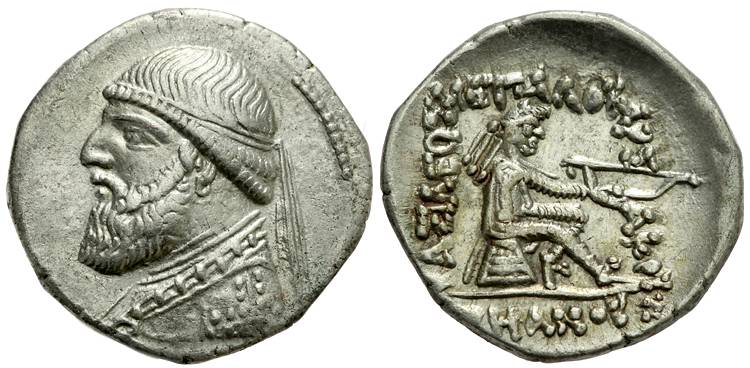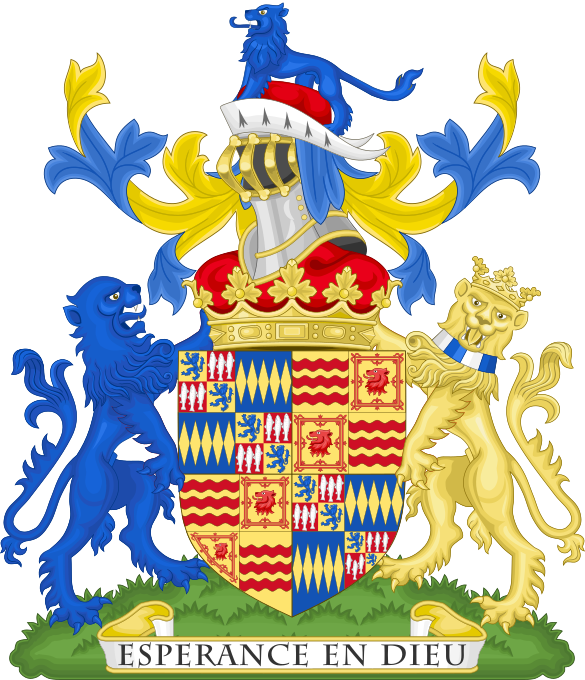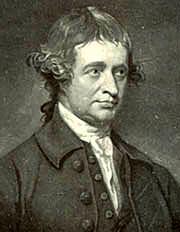|
Hovsep Emin
Joseph Emin (, ; 1726 – 2 August 1809) was an Indo-Armenian traveler, writer and patriot who sought to achieve the liberation of Armenia from Persian and Ottoman rule. He wrote an autobiography titled ''The Life and Adventures of Joseph Emin the Armenian Written in English by Himself'', which was first published in London in 1792. Born in Hamadan and raised in Calcutta, he traveled to London as a young man, received a military education there, and fought in the Seven Years' War. In 1759-1760, he traveled to Armenia for the first time, preaching his ideas of liberation to Armenian villagers along the way. He then went to Russia to seek support for his program for the liberation of Armenia. In 1763 he left Russia for Georgia with a group of supporters and was received by the Georgian king Heraclius II. Emin established contacts in Ottoman Armenia, hoping to eventually raise a rebellion with Heraclius's support. However, in 1764 the Georgian king exiled Emin, who then unsucces ... [...More Info...] [...Related Items...] OR: [Wikipedia] [Google] [Baidu] |
Hamadan
Hamadan ( ; , ) is a mountainous city in western Iran. It is located in the Central District of Hamadan County in Hamadan province, serving as the capital of the province, county, and district. As of the 2016 Iranian census, it had a population of 554,406 people in 174,731 households. Hamadan is believed to be among the oldest Iranian cities. It was referred to in classical sources as Ecbatana ( Old Persian ). It is possible that it was occupied by the Assyrians in 1100BCE; the Ancient Greek historian, Herodotus, states that it was the capital of the Medes, around 700BCE. Hamadan is situated in a green mountainous area in the foothills of the 3,574-meter Alvand Mountain, in midwestern Iran. The city is 1,850meters above sea level. It is located approximately southwest of Tehran. The old city and its historic sites attract tourists during the summer. The major sights of this city are the Ganj Nameh inscription, the Avicenna monument and the Baba Taher monument. The m ... [...More Info...] [...Related Items...] OR: [Wikipedia] [Google] [Baidu] |
New Julfa
New Julfa (, ''Now Jolfā'', or , ''Jolfâ-ye Now''; , ''Nor Jugha'') is the Armenians, Armenian quarter of Isfahan, Iran, located along the south bank of the Zayanderud. Established and named after the Gülüstan, Nakhchivan, older city of Julfa in the early 17th century (now divided as Jolfa, Iran and Julfa, Azerbaijan (city), Julfa, Azerbaijan), it is still one of the oldest and largest List of Armenian ethnic enclaves, Armenian quarters in the world (:hy:Նոր Ջուղայի գաղութ, hy). History New Julfa was established in 1606 as an Armenian quarter by the mandate of Abbas the Great, sultan of Safavid Iran. Over 150,000 Armenians of Julfa, Armenians were Great Surgun, forcibly moved there from Gülüstan, Nakhchivan, Julfa (also known as ''Jugha'' or ''Juła'', and now as Old Julfa) (:hy:Հայերի բռնագաղթն Իրան (1603-1604), hy). Iranian sources state that the Armenians came to Iran fleeing the Ottoman Empire's persecution. Nevertheless, historical ... [...More Info...] [...Related Items...] OR: [Wikipedia] [Google] [Baidu] |
Duke Of Northumberland
Duke of Northumberland is a noble title that has been created three times in English and British history, twice in the Peerage of England and once in the Peerage of Great Britain. The current holder of this title is Ralph Percy, 12th Duke of Northumberland. 1551 creation The title was first created in the Peerage of England in 1551 for John Dudley, 1st Duke of Northumberland, John Dudley, 1st Earl of Warwick. He had already been created Viscount Lisle in 1543 and Earl of Warwick in 1547, also in the Peerage of England. In 1553, Dudley advanced the claim of his daughter-in-law, Lady Jane Grey, to the English throne, but when she was deposed by Mary I of England, Queen Mary I, Dudley was convicted of high treason and executed. An illegitimate son of one of his younger sons, Robert Dudley, 1st Earl of Leicester, Robert Dudley, styled Earl of Warwick, Sir Robert Dudley, claimed the dukedom when in exile in Italy. On 9 March 1620 the Ferdinand II, Holy Roman Emperor, Emperor Ferdina ... [...More Info...] [...Related Items...] OR: [Wikipedia] [Google] [Baidu] |
Hugh Percy, 1st Duke Of Northumberland
Hugh Percy, 1st Duke of Northumberland, (6 June 1786) was an English peer, politician, and landowner. Origins Hugh Smithson was born , the son of Langdale Smithson (b. 1682) of Langdale, and Philadelphia Reveley. He was a grandson of Sir Hugh Smithson, 3rd Baronet, from whom he inherited the Smithson Baronetcy in 1733. Marriage, projects and patronages He changed his surname to ''Percy'' in 1749, nine years after his marriage with Elizabeth Percy, Duchess of Northumberland (1716–1776), Lady Elizabeth Seymour (1716–1776), daughter of Algernon Seymour, 7th Duke of Somerset, The 7th Duke of Somerset, on 16 July 1740, through a private act of Parliament, the (23 Geo. 2. c. ''14'' ). She was ''Baron Percy, Baroness Percy'' Suo jure, in her own right, and indirect heiress of the House of Percy, Percy family, which was one of the leading landowning families of England and had previously held the Earl of Northumberland, Earldom of Northumberland for several centuries. The ... [...More Info...] [...Related Items...] OR: [Wikipedia] [Google] [Baidu] |
Edmund Burke
Edmund Burke (; 12 January [New Style, NS] 1729 – 9 July 1797) was an Anglo-Irish Politician, statesman, journalist, writer, literary critic, philosopher, and parliamentary orator who is regarded as the founder of the Social philosophy, social and Philosophy of culture, cultural philosophy of conservatism.Andrew Heywood, ''Political Ideologies: An Introduction''. Third Edition. (Palgrave Macmillan, 2003), p. 74. Regarded as one of the most influential conservative thinkers and writers, Burke spent most of his political career in Great Britain and was elected as a member of Parliament (MP) from 1766 to 1794 in the House of Commons of Great Britain with the Whig (British political party), Whig Party. His writings and literary publications influenced British conservative thought to a great extent, and helped establish the earliest foundations for modern conservatism and liberal democracy. His writings also played a crucial role in influencing public views and opinions in Britain ... [...More Info...] [...Related Items...] OR: [Wikipedia] [Google] [Baidu] |
Israel Ori
Israel Ori () (1658–1711) was a prominent figure of the Armenian national movement, Armenian national liberation movement and a diplomat that sought the liberation of Armenia from Persia and the Ottoman Empire. Early life Ori was born in 1658 in the village of Sisian in Syunik Province, Syunik. He was the son of Melik Haikazian of Syunik Province, Syunik. During his youth along with a number of other Armenians, Ori looked for support among the European powers in the fight of Armenians against the Persian and Ottoman Empires. As one of the members of a seven-man delegation created by Catholicos of Armenia, Catholicos Jacob IV of Armenia, Jacob IV and the support of Georgian King George XI of Kartli, George XI he visited Constantinople in 1678. When the Catholicos died, the plan was abandoned, but Ori independently resolved to complete the mission and journeyed to Venice, Paris and Vienna. He joined the French army of Louis XIV, and entered into contact with the high political cir ... [...More Info...] [...Related Items...] OR: [Wikipedia] [Google] [Baidu] |
Nader Shah
Nader Shah Afshar (; 6 August 1698 or 22 October 1688 – 20 June 1747) was the founder of the Afsharid dynasty of Iran and one of the most powerful rulers in Iranian history, ruling as shah of Iran (Persia) from 1736 to 1747, when he was assassinated during a rebellion. He fought numerous campaigns throughout the Middle East, the Caucasus, Central Asia, and South Asia, emerging victorious from the battles of Herat, Mihmandust, Murche-Khort, Kirkuk, Yeghevārd, Khyber Pass, Karnal, and Kars. Because of his military genius,The Sword of Persia: Nader Shah, from Tribal Warrior to Conquering Tyrant "Nader commanded the most powerful military force in Asia, if not the world" (quote from publisher's summary) some historians have described him as the '' |
Siege Of Baghdad (1733)
The siege of Baghdad in 1733 was a relatively short but intense siege of Baghdad by the Persian army under Nader Shah. The outcome was determined not at Baghdad but ultimately far to the north near Samara where a large relief force commanded by the Topal Pasha inflicted a decisive defeat on Nader's Persian army (the only battlefield defeat of Nader's career). The Persian besiegers were forced away with the loss of most of their equipment and saving a much exhausted garrison desperate for relief. Commencement of the siege Ahmad Pasha, the Mamluk ruler of Iraq, cautiously held to the left bank of the Tigris knowing what a formidable barrier it posed to the invading Persian army. Nader camped on the east side and resorted to a ruse whereby he would fool the Ottomans by keeping a large portion of his men in and around the camp but only to gather a small hand-picked group of soldiers to march north under the cover of night. On February 15 Nader crossed the Tigris with 2,500 an ... [...More Info...] [...Related Items...] OR: [Wikipedia] [Google] [Baidu] |
Baghdad
Baghdad ( or ; , ) is the capital and List of largest cities of Iraq, largest city of Iraq, located along the Tigris in the central part of the country. With a population exceeding 7 million, it ranks among the List of largest cities in the Arab world, most populous cities in the Middle East and Arab world and forms 22% of the Demographics of Iraq, country's population. Spanning an area of approximately , Baghdad is the capital of its Baghdad Governorate, governorate and serves as Iraq's political, economic, and cultural hub. Founded in 762 AD by Al-Mansur, Baghdad was the capital of the Abbasid Caliphate and became its most notable development project. The city evolved into a cultural and intellectual center of the Muslim world. This, in addition to housing several key academic institutions, including the House of Wisdom, as well as a multi-ethnic and multi-religious environment, garnered it a worldwide reputation as the "Center of Learning". For much of the Abbasid era, duri ... [...More Info...] [...Related Items...] OR: [Wikipedia] [Google] [Baidu] |
Safavid Dynasty
The Safavid dynasty (; , ) was one of Iran's most significant ruling dynasties reigning from Safavid Iran, 1501 to 1736. Their rule is often considered the beginning of History of Iran, modern Iranian history, as well as one of the gunpowder empires. The Safavid List of monarchs of Persia, Shah Ismail I established the Twelver denomination of Shia Islam, Shi'a Islam as the Safavid conversion of Iran to Shia Islam, official religion of the Persian Empire, marking one of the most important turning points in the history of Islam. The Safavid dynasty had its origin in the Safavid order, Safavid Sufi order, which was established in the city of Ardabil in the Azerbaijan (Iran), Iranian Azerbaijan region. It was an Iranian dynasty of Kurdish people, Kurdish origin, but during their rule they intermarried with Turkoman (ethnonym), Turkoman, Georgians, Georgian, Circassians, Circassian, and Pontic Greeks, Pontic GreekAnthony Bryer. "Greeks and Türkmens: The Pontic Exception", ''Dumbarton ... [...More Info...] [...Related Items...] OR: [Wikipedia] [Google] [Baidu] |
Isfahan (city)
Isfahan or Esfahan ( ) is a city in the Central District of Isfahan County, Isfahan province, Iran. It is the capital of the province, the county, and the district. It is located south of Tehran. The city has a population of approximately 2,220,000, making it the third-most populous city in Iran, after Tehran and Mashhad, and the second-largest metropolitan area. Isfahan is located at the intersection of the two principal routes that traverse Iran, north–south and east–west. Isfahan flourished between the 9th and 18th centuries. Under the Safavid Empire, Isfahan became the capital of Iran, for the second time in its history, under Abbas the Great. It is known for its Persian–Muslim architecture, grand boulevards, covered bridges, palaces, tiled mosques, and minarets. Isfahan also has many historical buildings, monuments, paintings, and artifacts. The fame of Isfahan led to the Persian proverb ''Esfahān nesf-e-jahān ast'' (Isfahan is half (of) the world). Naqsh-e J ... [...More Info...] [...Related Items...] OR: [Wikipedia] [Google] [Baidu] |
Afghanistan
Afghanistan, officially the Islamic Emirate of Afghanistan, is a landlocked country located at the crossroads of Central Asia and South Asia. It is bordered by Pakistan to the Durand Line, east and south, Iran to the Afghanistan–Iran border, west, Turkmenistan to the Afghanistan–Turkmenistan border, northwest, Uzbekistan to the Afghanistan–Uzbekistan border, north, Tajikistan to the Afghanistan–Tajikistan border, northeast, and China to the Afghanistan–China border, northeast and east. Occupying of land, the country is predominantly mountainous with plains Afghan Turkestan, in the north and Sistan Basin, the southwest, which are separated by the Hindu Kush mountain range. Kabul is the country's capital and largest city. Demographics of Afghanistan, Afghanistan's population is estimated to be between 36 and 50 million. Ancient history of Afghanistan, Human habitation in Afghanistan dates to the Middle Paleolithic era. Popularly referred to as the graveyard of empire ... [...More Info...] [...Related Items...] OR: [Wikipedia] [Google] [Baidu] |







